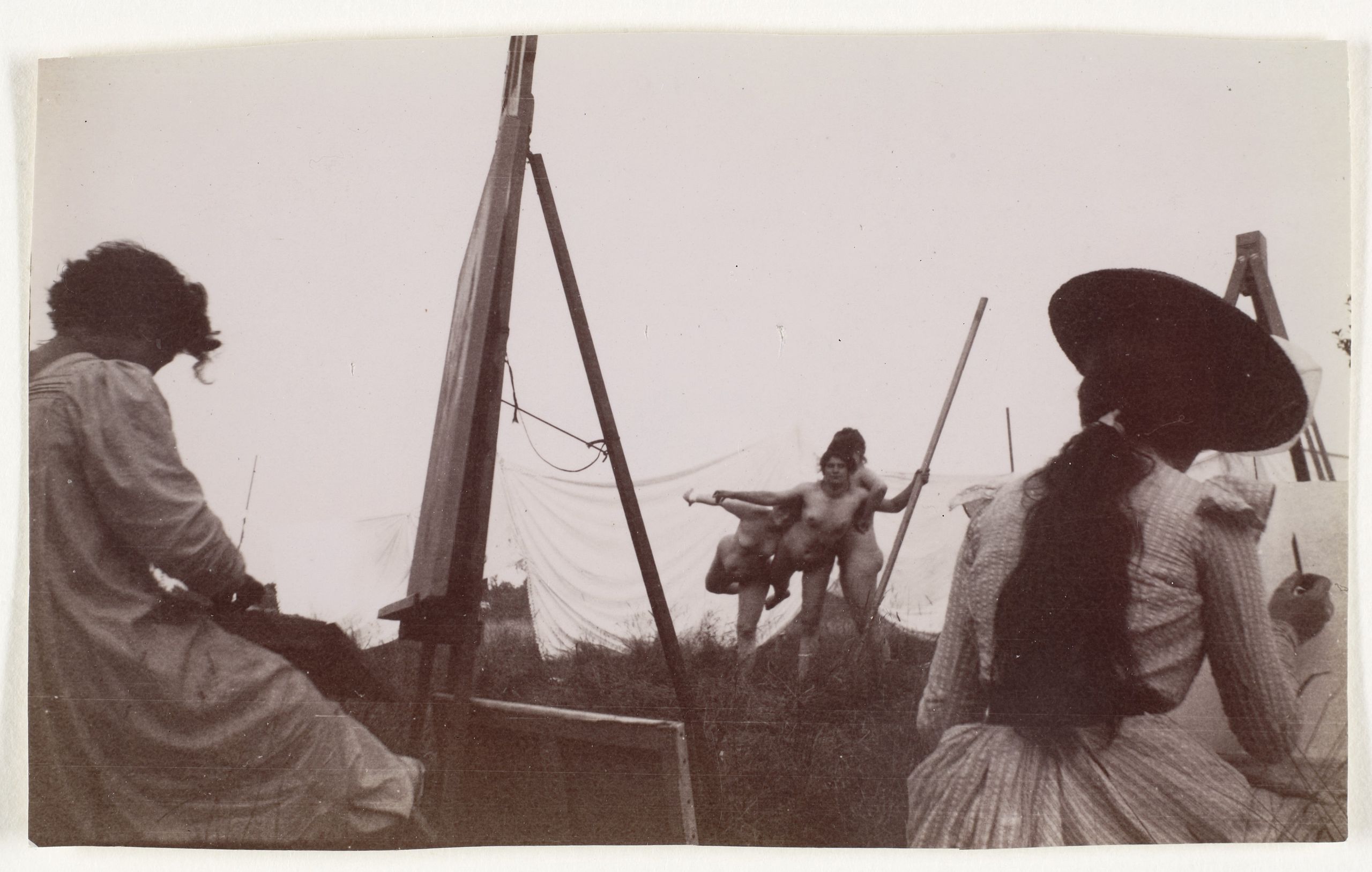From Model to Sitter
On Reclaiming Colonial Photography
DOI:
https://doi.org/10.58519/aesthinv.v6i2.16888Keywords:
portraiture, colonial photography, portraitAbstract
This paper focuses on historic anthropological photographs, meant to depict Indigenous individuals as generic models of colonial stereotypes, and examines their later reclamation as portraits. Applying an intention-based account of portraiture, we discuss the historical context and contemporary examples of the utilisation of these images in order to address several questions. What happens when the depicted persons in colonial imagery are treated and presented as sitters, rather than model specimens? Does this change the nature of the image? If a photograph was not originally intended as a portrait, can it come to function as such at a later stage? Regardless of whether they fulfill all the requirements necessary for portraiture, these colonial photographs represent a vital resource for the reclamation of Indigenous cultural heritage. As such, this paper serves as an introductory discussion into the complex issues surrounding the recategorisation, repatriation, and restitution of colonial photographic archives.
Downloads
References
Andrew, Brook, and Jessica Neath. ‘Encounters with Lecacy Images: Decolonising and Re-Imagining Photographic Evidence from the Colonial Archive’. History of Photography 43, no. 3 (2018): 217–38.
Basu, P. ‘Physical Type Photographs’. [Re:]Entanglements 4 (August 2021). https://re-entanglements.net/physical-types/>.
Bradley, J., P. Adgemis, and L. Haralampou. ‘“Why Can’t They Put Their Names?”: Colonial Photography, Repatiration and Social Memory’. History and Anthropology, 2014, 47–71.
Croft, Brenda L. ‘Laying Ghosts to Rest’. In Colonialist Photography: Imag(in)Ing Race and Place, edited by Eleanor M. Hight and Gary D. Sampson. London: Routledge, 2002.
DeRoo, Rebecca J. ‘Colonial Collecting: French Women and Algerian Cartes Postales’. In Colonialist Photography: Imag(in)Ing Race and Place, edited by Eleanor M. Hight and Gary D. Sampson. London: Routledge, 2002.
Eileraas, Karina. ‘Reframing the Colonial Gaze: Photography, Ownership, and Feminist Resistance’. MLN 118, no. 4 (2003): 807–40.
Ergogdu, Ayshe. ‘Colonial Collecting: French Women and Algerian Cartes Postales’. In Colonialist Photography: Imag(in)Ing Race and Place. London: Routledge, 2002.
Falconer, John. ‘Colonial Collecting: French Women and Algerian Cartes Postales’. In Colonialist Photography: Imag(in)Ing Race and Place, edited by Eleanor M Hight and Gary D. Sampson. London: Routledge, 2002.
Freeland, Cynthia. Portraits and Persons. Oxford: Oxford University Press, 2010.
Galton, Francis. ‘Composite Portraits of Criminal Types’. The Metropolitan Museum of Art, n.d. https://www.metmuseum.org/art/collection/search/301897.
Goodyear, A.C., J.F. Walz, K.M. Campagnolo, and D. Evans. This Is a Portrait If I Say So: Identity in American Art, 1912 to Today. Bowdoin College Museum of Art, 2016.
Hayes, Michael. ‘Colonial Collecting: French Women and Algerian Cartes Postales’. In Colonialist Photography: Imag(in)Ing Race and Place, edited by Eleanor M. Hight and Gary D. Sampson. London: Routledge, 2002.
Hight, Eleanor M., and Gary D. Sampson, eds. Colonialist Photography: Imag(in)Ing Race and Place. London: Routledge, 2002.
Hirono, M. Civilizing Missions: International Religious Agencies in China. Culture and Religion in International Relations. New York: Palgrave Macmillan US, 2008.
Howells, Katherine. ‘Early Photography in India: Tracing Photographers through Copyright Records’. The National Archives, 12 December 2022. https://blog.nationalarchives.gov.uk/early-photography-in-india-tracing-photographers-through-copyright-records/.
Lewis, Diane. ‘Anthropology and Colonialism’. Current Anthropology 14, no. 5 (1973): 581–602.
Mabry, Hannah. ‘Photography, Colonialism and Racism’. International Affairs Review, 2014, 1–7.
Maes, Hans. ‘What Is a Portrait?’ British Journal of Aesthetics 55, no. 3 (2015): 303–22.
Moorhouse, Paul. Pop Art Portraits. London: National Portrait Gallery, 2007.
Moser, Gabrielle. Projecting Citizenship: Photography and Belonging in the British Empire. Penn State University Press, 2019.
Pierce, Jane. ‘August Sander’. MoMA, 2022. https://www.moma.org/artists/5145.
Poignant, Roslyn. ‘Wurdayak/Baman (Life History) Photo Collection: Report on the Setting up of a Life History Photo Collection at the Djomi Museum, Marringrida’. Australian Aboriginal Studies (Canberra), no. 2 (1992): 71–77.
‘[Re:]Entanglements’, 2020. https://re-entanglements.net/.
Sampson, Gary D. ‘Colonial Collecting: French Women and Algerian Cartes Postales’. In Colonialist Photography: Imag(in)Ing Race and Place, edited by Eleanor M. Hight and Gary D. Sampson. London: Routledge, 2002.
Spinicci, Paolo. ‘Portraits: Some Phenomenological Remarks’. In Proceedings of the European Society for Aesthetics, 1:37–59, 2009.
Watson, John Forbes, and John Williams Kaye. The People of India: A Series of Photographic Illustrations, with Descriptive Letterpress, of the Races and Tribes of Hindustan, Originally Prepared Under the Authority of the Government of India, and Reproduced by Order of the Secretary of State for India in Council. Vol. 1. Smithsonian Online Virtual Archives, n.d. https://transcription.si.edu/project/6587.
Downloads
Published
Issue
Section
License
Copyright (c) 2023 Michelle Green, Hans Maes

This work is licensed under a Creative Commons Attribution 4.0 International License.
Authors who publish with this journal agree to the following terms:
Authors retain copyright and grant the journal right of first publication with the work simultaneously licensed under a Creative Commons Attribution License that allows others to share the work with an acknowledgement of the work's authorship and initial publication in this journal. Note: up to volume 4 issue 1, an incorrect copyright line appears in the PDFs of the articles.
Authors are able to enter into separate, additional contractual arrangements for the non-exclusive distribution of the journal's published version of the work (e.g., post it to an institutional repository or publish it in a book), with an acknowledgement of its initial publication in this journal.
Authors are permitted and encouraged to post their work online (e.g., in institutional repositories or on their website) prior to and during the submission process, as it can lead to productive exchanges, as well as earlier and greater citation of published work (See The Effect of Open Access).






